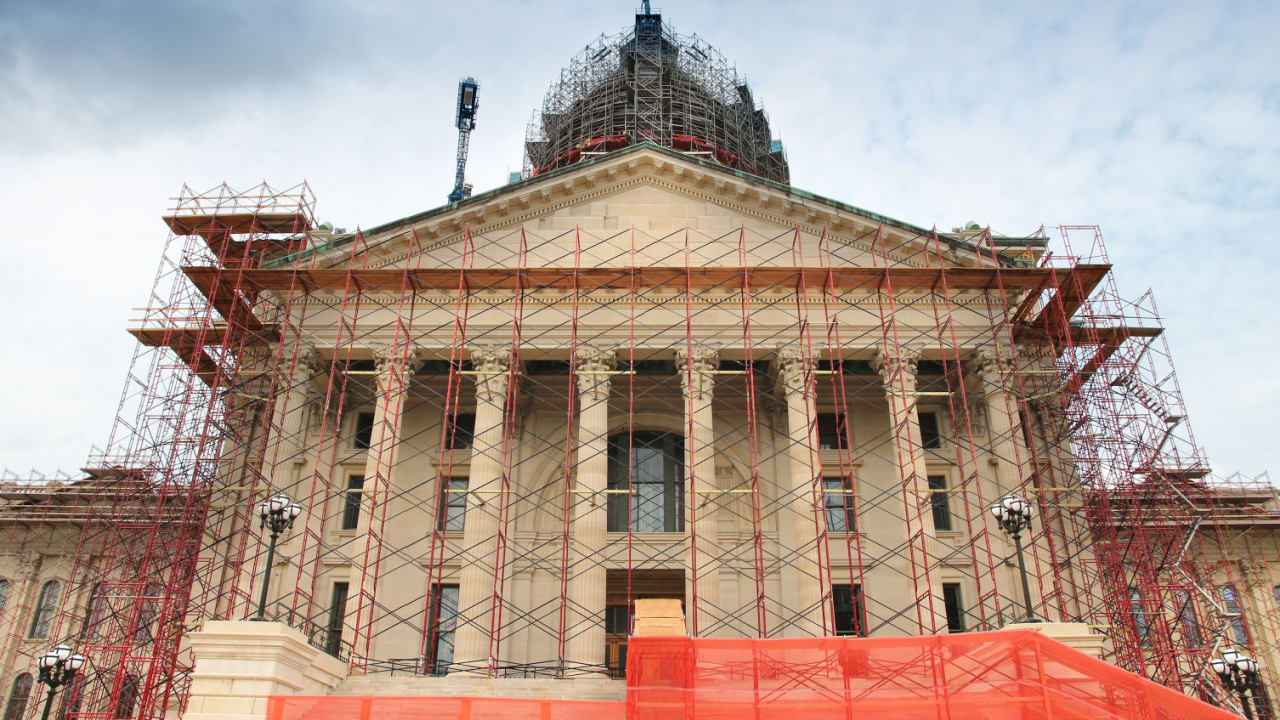
Federal Mandates, Legislation and OSHA Requirements Contractors Need to Know
After dealing with the COVID-19 pandemic for nearly two years, many safety professionals (and others) hoped that COVID-19 regulations would be no longer necessary or a model of clarity by this point if they were still around. Construction employers expecting clarity were disappointed until recently, when the United States Supreme Court provided some clarity with respect to OSHA’s vaccine-or-test mandate. However, for those construction employers with federal contracts, the Federal Contractor Vaccine Mandate remains stayed and is in limbo pending the appeal before the Eleventh Circuit Court of Appeals.
On the non-COVID front, construction industry safety officials will also have to prepare for the Heat Illness Prevention Standard OSHA has signaled it will issue, and will want to continue to monitor the status of, the infrastructure and spending bill known as the Build Back Better Act (H.R. 5376). The Build Back Better Act, in its last proposed form, would result in monumental increases to OSHA penalties if enacted.
1. Vaccine-or-Test ETS
On Jan. 13, 2022, the United States Supreme Court stayed the enforcement of OSHA’s Vaccine-or-Test Emergency Temporary Standard (ETS). The ETS requires employers with 100 or more employees (with limited exceptions) to ensure their employees are vaccinated, or else conduct weekly testing of their unvaccinated employees while enforcing mask and social distancing requirements.
Given the Supreme Court’s decision, employers are relieved from mandated compliance with the ETS for the time being. Technically speaking, however, the Supreme Court’s decision did not kybosh the ETS. The Sixth Circuit Court of Appeals will likely hear the merits of the case and could decide if the ETS is valid. Such a decision would almost surely be appealed to the Supreme Court, which would likely stand by its decision that the ETS is legally flawed. While the ETS saga continues in the lower court, OSHA announced it will continue to ensure the health and safety of workers through the use of its COVID-19 National Emphasis Program (NEP) that it issued earlier in the pandemic. Non-complying employers with OSHA and CDC guidance will continue to be cited under OSHA’s General Duty Clause. Employers may choose to require their own COVID-19 measures, including vaccination and/or testing, regardless of the ETS’s status—however, employers considering such an option need to confirm that the states in which they operate have not passed legislation prohibiting private employers from mandating vaccinations or testing. Moreover, employers choosing to require such measures will also need to be wary of employees requesting accommodation/exemption from vaccination because of health or religious reasons. Such accommodation issues can be difficult and nuanced; therefore, employers should consult competent legal counsel as needed to ensure they do not incur unnecessary liability.
Finally, it is possible that OSHA decides to scrap its current ETS and either draft a new ETS or a newly proposed infectious disease or COVID-19 standard through notice-and-comment rulemaking. The Supreme Court’s decision staying the ETS acknowledged OSHA has the authority to regulate “occupation-specific risks related to COVID-19”—that is, where the nature of the job environment or job tasks heighten the risk of exposure to the virus. As such, OSHA could potentially issue a new ETS or rule that is narrowly tailored and tied to occupational-specific risks in certain industries. Construction employers will want to continue monitoring OSHA’s announcements related to COVID-19 in the coming months to see if such rulemaking occurs.
2. The Federal Contractor Mandate
On Dec. 7, 2021 a federal court in Georgia issued an order enjoining the enforcement of Executive Order (EO) 14042, commonly called the “federal contractor vaccine mandate.” The court’s decision stayed implementation of the order nationwide. The order originally required employers to comply with the mandate by Jan. 18, 2022. The federal contractor vaccine mandate seeks to require all federal contractors and subcontractors with covered contracts to:
- require vaccination of their employees, unless they are exempt due to a medical condition, disability, or a sincerely held religious belief, practice or observance;
- comply with masking and social distancing in covered contractor workplaces; and
- designate a COVID-19 workplace safety officer at covered contractor workplaces.
Notably, those employers covered by the federal contractor vaccine mandate are exempted from the Vaccine-or-Test ETS.
The federal contractor mandate is presently stayed nationwide, and appeals are ongoing in the Fifth, Sixth, Eighth and Eleventh Circuits. The present stay provides a temporary reprieve for federal contractors and subcontractors across the United States. The problem is that construction employers do not know how temporary this reprieve may be and how soon they may need to implement compliance efforts if the stay were dissolved. Moreover, the Eleventh Circuit could decide the merits of the matter in as soon as March or April 2022. While the courts have so far found flaws with the federal contractor mandate and have kept the stay in place, some employers may wish to take a more cautious approach and perform behind-the-scenes actions in the event there is a revived federal contractor vaccine mandate. Some steps to consider include:
- establish a compliant written policy on vaccines and determine how to enforce it should the EO come back online;
- plan for how to handle temporary and long-term employee loss;
- provide information to employees on vaccines and their safety and effectiveness;
- determine how to explain the pending court litigation and pending appeal(s), because many employees may assume that the EO rule is dead if they just glanced at headlines; and
- build a process (committee, outside providers, etc.) to evaluate requests for medical and religious accommodations.
Such steps will permit an employer to be at the ready should the vaccine mandate be reinstated. If the federal contractor mandate were to be revived, it is possible that the window for compliance could be short.
3. OSHA’s Heat Illness Prevention Standard
On Oct. 27, 2021, OSHA published an Advance Notice of Proposed Rulemaking (ANPRM) for Heat Injury and Illness Prevention in Outdoor and Indoor Work Settings in the Federal Register. This signaled the beginning of OSHA’s efforts to consider a heat-specific workplace standard. OSHA believes that a heat-specific standard will more clearly set forth employer obligations and measures to effectively protect employees from heat stress and illness.
In the past, OSHA has cited employers for heat-related hazards under the OSH Act’s General Duty Clause. OSHA’s General Duty Clause requires employers to provide a place of employment that is “free from recognizable hazards that are causing or likely to cause death or serious harm to employees.” This has resulted in mixed success, as employers have often demonstrated that such hazards are not widely recognized within the industry, that OSHA did not establish with the requisite scientific support that a hazard existed, and/or that the proposed manner of abatement would have been feasible, useful and effective.
It is likely that OSHA will issue a new heat-related standard, and that OSHA will borrow some of the provisions of State OSHA plans that already have such a standard. For example, OSHA will likely look to California, Oregon, Washington and Minnesota’s heat standards for guidance.
While employers will have to wait to know the standard’s specifics, they can take steps now to reduce the risk of heat injury and illness in their workplace. In a May 2010 Standard Interpretation Letter, OSHA provided guidance to employers on acceptable methods of abating heat-stress hazards in workplaces, including but not limited to:
- permitting workers to drink water or cold liquids (e.g., sports drinks) at liberty;
- establishing a work/rest schedule so that the exposure to high temperatures is reduced; and
- developing a heat-stress program.
Effective heat-stress programs should train employees on the effects of heat-stress and how to recognize and prevent heat-related illness and symptoms. Employers should also have a process to acclimatize new employees and re-acclimatize employees returning from three-days absence or more. Additional steps might include steps might include starting the workday earlier in the morning and stopping work before peak heat and humidity levels arrive. Employers may also consider allowing a greater number of, and more frequent, rest breaks and allowing employees to sit in the shade or in air-conditioning (even if it is in personal vehicles) to give them a break from the heat. Construction employers should make sure water coolers, bottled water or other fluids are readily available for employees.
4. Build Back Better Act and OSHA Penalties
The infrastructure and spending bill known as the Build Back Better Act (H.R. 5376) passed in the House and has stalled in the Senate. While it is uncertain whether the Act will pass, if it were to pass in its present form it contains provisions that could have a big impact on construction-industry employers: monumental increases to OSHA penalties.
Presently, OSHA can levy penalties up to $13,653 per violation for “other-than-serious” and “serious” violations of the Act, and for up to $136,532 per violation for “willful” or “repeat” violations of the Act. Under the most-recent version of the Build Back Better Act, those penalties would increase to up to $70,000 per violation for “other-than-serious” and “serious” violations of the Act, and up to $700,000 per violation for “willful” or “repeat” violations of the Act. Notably, the Build Back Better Act would also impose a $50,000 minimum penalty for “willful” and “repeat” violations.
As such, construction employers should pay close attention to the fate of the Build Back Better Act and whether the version, if ultimately passed, contains an increase to OSHA penalties.
Conclusion
As employers enter 2022, they face the legal and legislative uncertainties left by the year-end of 2021. Construction employers will need to stay informed on the ever-changing legal landscape related to the COVID-19 mandates, as well as stay on top of the status of OSHA’s new heat-specific standard and the Build Back Better Act. To do so, employers should consult well-trusted sources, competent safety consultants, and/or competent legal counsel to assist them with implementing the necessary policies during a very uncertain time.
Curtis Moore practices in the Charlotte office of national labor and employment law firm Fisher Phillips. He devotes a substantial part of his practice to construction matters and represents construction industry employers before the Occupational Safety and Health Review Commission, federal and state courts, and other administrative agencies across the country.
Related stories








